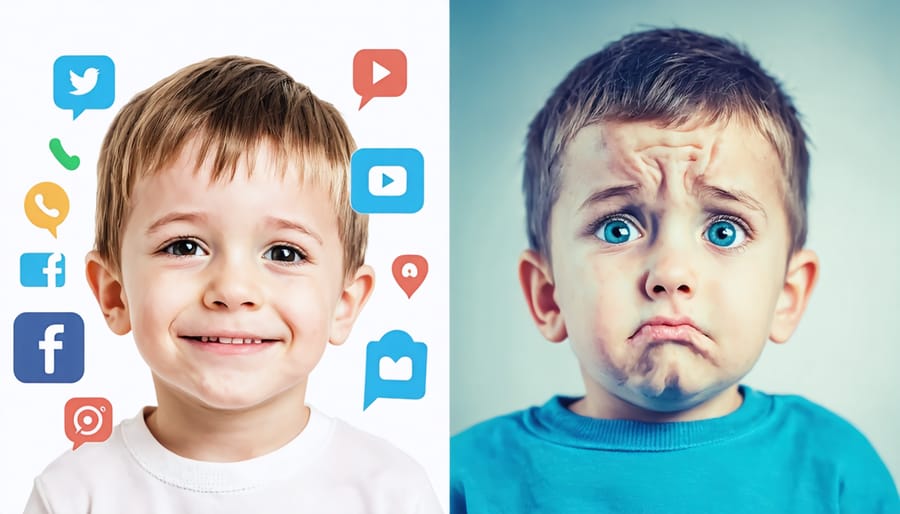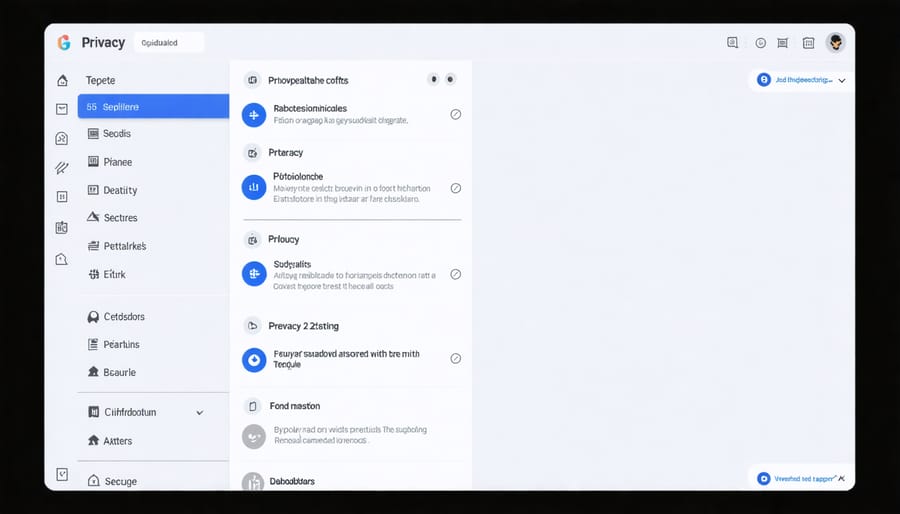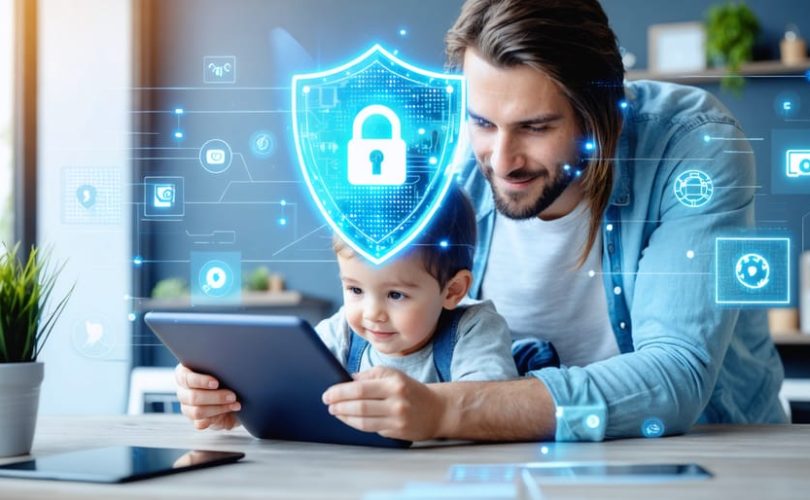In today’s digital landscape, protecting our children’s privacy while ensuring their safety online has become one of parenting’s most delicate balancing acts. As we navigate the complexities of digital citizenship, parents face a crucial dilemma: how much monitoring is too much, and where do we draw the line between safeguarding and surveillance?
The intersection of data privacy and security isn’t just about technical solutions—it’s about nurturing trust while protecting our children from genuine online threats. When we install parental controls or monitor online activities, we’re not just implementing security measures; we’re making decisions that impact our children’s sense of autonomy and their mental well-being.
Research shows that children whose parents strike the right balance between privacy and protection develop stronger digital literacy skills and healthier online behaviors. By understanding this delicate equilibrium, we can create safer digital environments without compromising the trust and independence essential for our children’s emotional growth.
As we explore this critical topic, we’ll discover practical strategies that respect both privacy and security, ensuring our children can thrive in the digital age while staying protected from its risks.
Understanding Data Privacy vs. Security in Children’s Digital World

What is Data Privacy?
Data privacy refers to how personal information about your child is collected, used, and shared online. Think of it as having control over your child’s digital footprint – from their photos and videos to their educational records and social media activities. As a parent, you might share your child’s first day of school picture or their dance recital video, but data privacy ensures you have a say in who sees this information and how it’s used.
For example, when your child uses educational apps or games, these platforms often collect data about their learning progress, preferences, and even their location. Data privacy measures help protect this sensitive information from being misused or shared without your consent.
It’s particularly important for children’s mental health and well-being, as their digital presence can affect their future relationships, educational opportunities, and self-image. Just as we teach our children to be careful about sharing personal information with strangers in the real world, we need to be mindful of their digital privacy.
Parents and caregivers should have the tools and knowledge to make informed decisions about their children’s online presence, including understanding privacy settings, data collection policies, and the potential long-term impacts of digital sharing.
What is Data Security?
Data security encompasses all the measures we take to protect our children’s information from unauthorized access, breaches, or misuse. Think of it as a protective shield that keeps sensitive details about our kids safe from those who shouldn’t have access to them.
When it comes to children’s information, data security includes protecting everything from medical records and school documents to online activity and personal identification details. This involves using strong passwords, encryption methods, and secure storage systems to safeguard this sensitive information.
For parents and professionals working with children, implementing data security measures is crucial. This might include using password-protected devices, enabling two-factor authentication on accounts containing children’s information, and regularly updating security software. Schools and healthcare providers often use specialized security systems to protect children’s records, including firewalls and secure servers.
It’s important to remember that data security isn’t just about technology – it’s also about creating and following proper procedures. This includes training staff who handle children’s information, establishing clear protocols for data sharing, and regularly reviewing and updating security measures to address new threats.
Why Both Matter for Your Child’s Mental Health

Digital Footprints and Mental Well-being
In today’s digital age, children’s online activities leave lasting digital footprints that can significantly impact their mental well-being. As young people share personal information, photos, and experiences online, they’re creating a permanent record that could affect their self-image and emotional development. Research shows that excessive sharing and inadequate privacy protection can lead to increased anxiety, decreased self-esteem, and vulnerability to cyberbullying.
Parents and educators play a crucial role in teaching responsible online behavior while maintaining healthy boundaries. Dr. Sarah Chen, a child psychologist, emphasizes the importance of open dialogue: “When children understand the permanence of their digital footprint, they’re more likely to make thoughtful choices about what they share online.”
Creating a balanced approach to online privacy helps children develop a healthy digital identity. This includes teaching them to think critically about their posts, understanding privacy settings, and recognizing when to seek adult guidance. By fostering these skills early, we help protect not just their data, but their emotional well-being and future opportunities.
Security Breaches and Emotional Impact
When children experience data breaches or privacy violations, the emotional impact can be profound and long-lasting. As Sarah, a child psychologist with 15 years of experience, explains, “Children often feel vulnerable and violated when their personal information is compromised, similar to having their diary read without permission.”
Common emotional responses include anxiety, depression, and a loss of trust in digital spaces. Many children report feeling scared to use technology afterward, which can affect their educational and social development in our increasingly digital world. Some may become withdrawn from online activities, while others might develop heightened anxiety about sharing any personal information, even in safe contexts.
Parents often notice behavioral changes following privacy breaches. These might include difficulty sleeping, increased irritability, or reluctance to participate in online learning. Young victims of cyberbullying resulting from data breaches frequently experience shame and isolation, believing they’re somehow responsible for the breach.
To help children cope, it’s essential to validate their feelings and maintain open communication. Creating a supportive environment where they can express their concerns without judgment helps them rebuild confidence and develop healthy digital boundaries.
Finding the Right Balance
Age-Appropriate Privacy Settings
Setting privacy controls for children requires a thoughtful approach that evolves with their age and maturity level. For young children ages 5-8, parents should maintain full control over privacy settings, ensuring strict limitations on data sharing and implementing parental controls across all devices and applications.
As children enter their pre-teen years (9-12), gradually introduce them to basic privacy concepts. Start by explaining why certain information should remain private and involve them in decisions about sharing photos or personal details online. This age group can begin learning about password security and the importance of keeping certain information confidential.
For teenagers (13-16), foster independence while maintaining oversight. Allow them to manage their own privacy settings under guidance, teaching them about location sharing, friend requests, and social media privacy. Create a collaborative approach where teens can demonstrate responsible choices while having a safety net of parental monitoring.
Older teens (16+) should be given more autonomy in managing their digital privacy, with parents serving as advisors rather than controllers. This stage focuses on preparing them for independent digital citizenship while ensuring they understand the long-term implications of their privacy choices.
Remember that every child develops differently, so adjust these guidelines based on your child’s individual maturity level and understanding of digital risks. Regular conversations about online privacy and periodic reviews of privacy settings help build lasting habits for protecting personal information.

Security Measures That Don’t Compromise Privacy
Finding the right balance between protection and privacy doesn’t mean we have to choose one over the other. Many effective security tools respect personal boundaries while keeping children safe online. For example, content filtering software can block inappropriate websites without tracking browsing history, giving children the freedom to explore safely while maintaining their privacy.
Password managers designed for families offer another excellent solution. These tools help create and store strong passwords without monitoring individual account activities. They teach children good security habits while respecting their growing need for independence.
Following established online safety guidelines can help families implement protective measures thoughtfully. Consider using privacy-focused browsers that automatically clear browsing data and block trackers. These tools protect without collecting personal information.
Time management apps can help monitor screen time without accessing personal content. They focus on duration rather than specific activities, helping parents guide healthy digital habits while respecting privacy. Many also include features that encourage open dialogue about online activities rather than strict surveillance.
Communication remains key – establish clear boundaries and expectations with children about online behavior while respecting their growing need for privacy. This approach builds trust and helps children develop their own sense of digital responsibility.
Working with Schools and Healthcare Providers
Questions to Ask About Data Handling
When discussing data privacy with schools, healthcare providers, or other institutions that handle your child’s information, it’s essential to ask specific questions about their protection measures. Start by inquiring about their data collection policies – what information do they gather, why is it necessary, and how long do they retain it?
Ask about their security protocols: How is the data encrypted? Who has access to your child’s information? What background checks do they perform on staff members who handle sensitive data? Understanding their breach notification process is crucial – how and when will you be informed if there’s a security incident?
For educational institutions, explore their digital safety education programs and how they integrate privacy awareness into their curriculum. Request information about their third-party service providers and data-sharing agreements.
In healthcare settings, ask about HIPAA compliance and specific measures for protecting mental health records. Important questions include: How are electronic health records secured? What happens to the data when your child transitions to a different provider?
Don’t forget to inquire about opt-out options and parental controls. Can you review the collected information? How can you request modifications or deletions? Understanding these aspects helps ensure your child’s information remains protected while allowing necessary access for their care and development.
Your Rights as a Parent
As a parent, you have specific legal rights regarding your child’s data protection and privacy. Under laws like COPPA (Children’s Online Privacy Protection Act) in the United States, you have the right to know what information websites and apps collect from your children under 13 and how that information is used.
You can request to review your child’s personal information collected by any service provider, ask for its deletion, and refuse to allow further collection. Companies must obtain your verifiable consent before collecting personal information from your child.
When it comes to educational settings, FERPA (Family Educational Rights and Privacy Act) gives you the right to inspect your child’s educational records, request corrections to inaccurate information, and control the disclosure of their personal information to third parties.
For healthcare-related data, HIPAA regulations ensure you have access to your child’s medical records and can control who sees this sensitive information. This is particularly important when managing mental health records or special educational needs documentation.
Remember that you also have the right to:
– Be informed about data breaches affecting your child’s information
– Opt-out of having your child’s information used for marketing purposes
– Request detailed information about how your child’s data is stored and protected
– File complaints with relevant authorities if you believe your child’s privacy rights have been violated
Stay informed about these rights and don’t hesitate to exercise them when necessary to protect your child’s privacy while maintaining their safety online.
As we’ve explored throughout this article, protecting our children’s digital privacy while maintaining their security isn’t just a technical challenge – it’s a fundamental part of modern parenting and caregiving. The key is finding the right balance: implementing strong privacy measures while keeping enough oversight to ensure their safety.
Remember that you’re not alone in this journey. Many parents and professionals are navigating these same waters, learning and adapting as technology evolves. The most effective approach combines open communication with your children, regular education about online risks, and thoughtful implementation of privacy and security measures.
Start small by reviewing your current privacy settings on devices and apps, then gradually build up to more comprehensive protection strategies. Keep the conversation going with your children about their online experiences, and help them understand why certain measures are in place to protect them.
Most importantly, stay involved and informed. Technology and online threats continue to evolve, but so do the tools and resources available to protect our children. By taking a proactive approach to both privacy and security, we can help our children develop healthy digital habits while keeping them safe from harm.
Your engagement in this process matters more than any technical solution. When we combine caring oversight with respect for privacy, we create an environment where children can safely explore, learn, and grow in our digital world.


